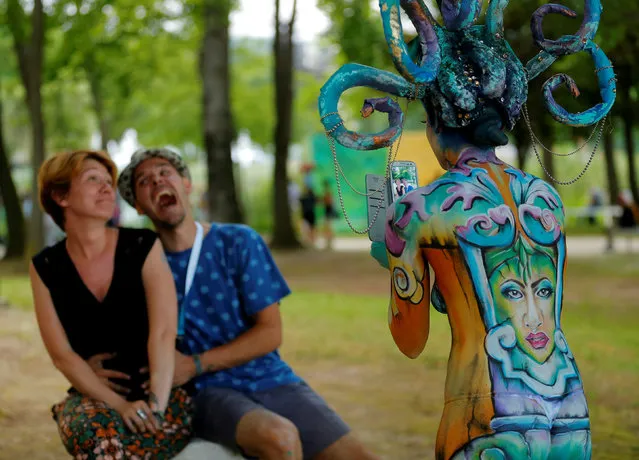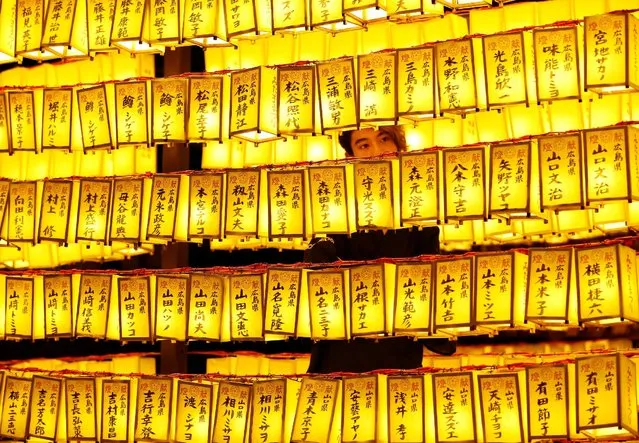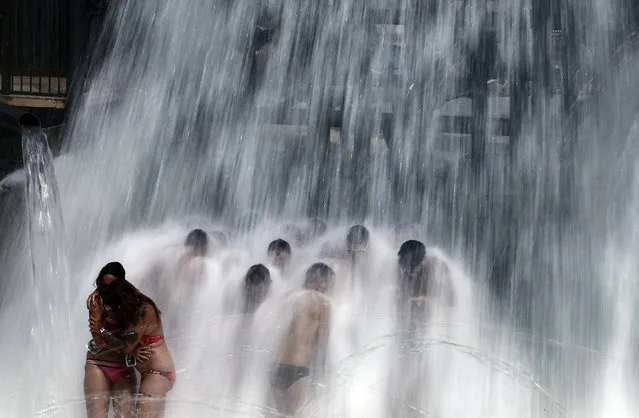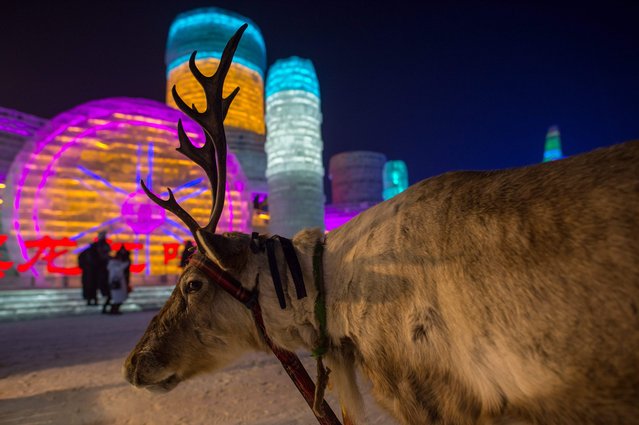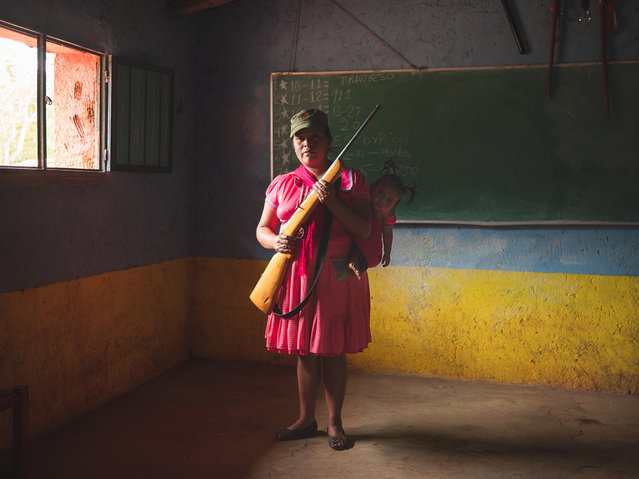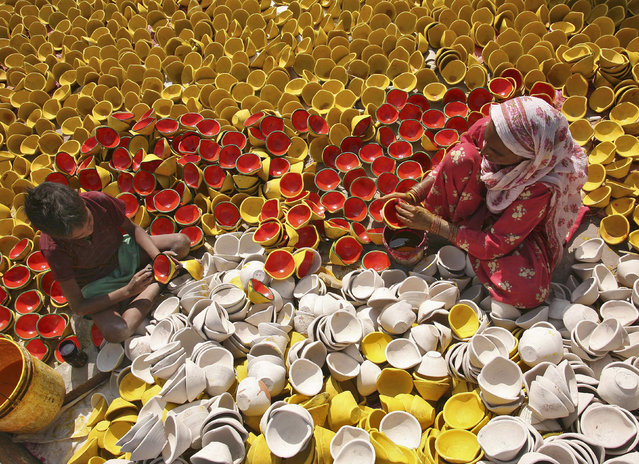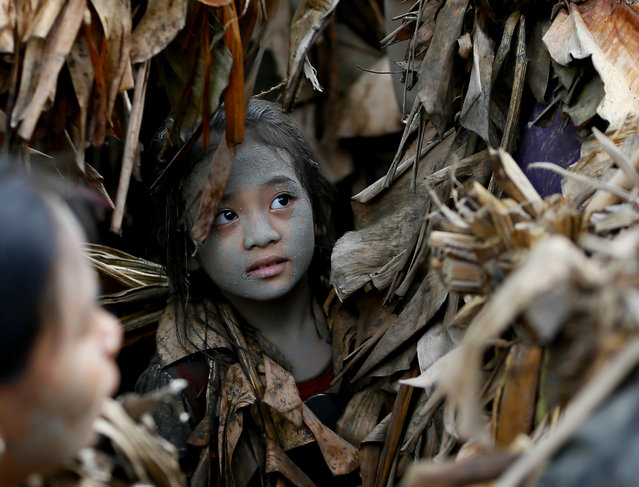
A village girl, donning capes mostly of dried banana leaves and covered in mud, attends a mass in a bizarre annual ritual to venerate their patron saint, John the Baptist, Friday, June 24, 2016 at Bibiclat, Aliaga township, Nueva Ecija province in northern Philippines. (Photo by Bullit Marquez/AP Photo)
24 Jun 2016 13:44:00,post received
0 comments

